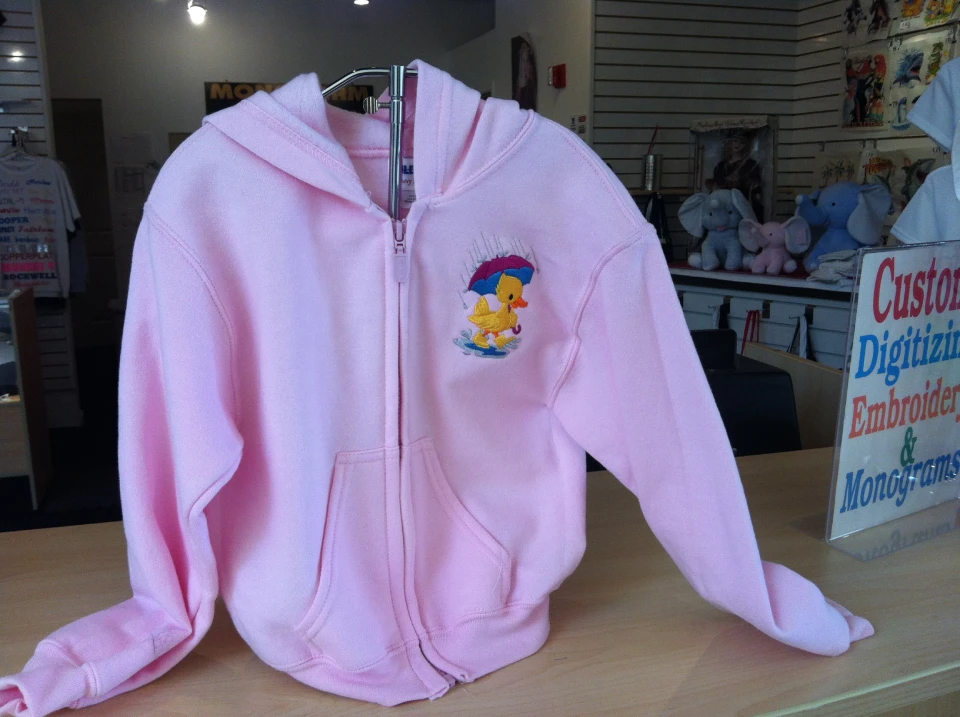The Art of Custom-made Embroidery: Opening the Keys to Creating Unique and Remarkable Designs
The secrets to creating personalized embroidery layouts that captivate the eye and leave a long-term impression lie in a fragile equilibrium of method, imagination, and focus to detail. As we dig right into the world of personalized needlework, we discover the nuanced interplay in between string selection, stitch intricacy, and style customization that boosts a plain garment to a job of art.
Selecting the Right Embroidery Threads
When choosing needlework threads, what key variables should you think about to ensure the best outcomes for your customized layouts? The selection of needlework thread is critical in identifying the final result of your stitched layout.
Moreover, the weight or thickness of the string plays a substantial role in the appearance of the needlework. Thicker threads can add measurement and structure to your design, while finer threads are suitable for complex information and small text. In addition, considering the color fastness and washability of the string is critical to make certain that your customized layouts preserve their high quality and vibrancy gradually. By very carefully examining these factors and selecting high-quality threads that fulfill your particular demands, you can improve the aesthetic appeal and longevity of your embroidered developments.
Checking Out Different Stitch Strategies
To look into the world of 'Exploring Different Stitch Techniques', one have to grasp the complexities and subtleties that each sewing approach gives the art of embroidery. Various stitch strategies not only include visual rate of interest however additionally contribute to the total texture and measurement of the design. One preferred stitch method is the satin stitch, which involves carefully jam-packed parallel stitches to create a smooth and shiny surface area, ideal for filling in forms and creating bold describes.
On the other hand, the backstitch is a functional strategy usually used for describing and adding great information. It involves sewing backwards to produce a strong line of needlework. Furthermore, the French knot stitch includes a tactile component to designs, best for creating textured accents like blossom centers or decorative touches.
Discovering different stitch methods permits embroiderers to play with light, shadow, and deepness within their layouts, elevating the visual charm and artistic quality of their embroidery projects. By mastering various stitching techniques, one can unlock countless possibilities for producing unique and memorable customized embroidery items.
Incorporating Personalized Layout Elements
Having checked out the intricacies of various stitch strategies such as the satin stitch, backstitch, and French knot, the focus currently shifts in the direction of incorporating personalized layout components in customized needlework projects. Individualized style aspects play a vital duty in making embroidery projects absolutely unique and remarkable. One means to include customization is by including initials, names, or considerable dates to the layout. This not only includes a tailored touch yet likewise boosts the sentimental worth of the embroidery item.
Another method to incorporate tailored style components is by check my source including symbols or concepts that hold unique significance to the recipient or mirror their passions and individuality. For instance, integrating a favored flower, pet, or hobby-related sign can make the embroidery style much more significant and tailored. In addition, picking shades that reverberate with the recipient or more helpful hints line up with the designated motif can additionally improve the personalization of the needlework project.
Mastering the Art of Shade Coordination
One key facet of color sychronisation is recognizing color concept. This consists of recognizing how different colors communicate with each other, the emotions they communicate, and exactly how they can be integrated to develop aesthetically enticing layouts. By using color concept concepts, embroiderers can create harmonious color palettes that improve the total look of the design.
In addition, taking notice of comparison is critical in color coordination. Using contrasting colors can help specific aspects of the layout pop, boost clarity, and create an aesthetically vibrant needlework item. By grasping the art of shade sychronisation, embroiderers can elevate their styles and create unforgettable items that reverberate with customers and audiences alike.
Enhancing Structure With Advanced Needlework Stitches

French knots, for instance, are best for adding tiny, increased dots to your design, simulating the look of grains or developing a distinctive surface area. Bullion knots, on the various other hand, can be made use of to produce twisted, ropelike i tailor suits aspects that add a glamorous feeling to the needlework. Seed sewing includes small, scattered stitches that can load in areas with a multicolor texture, while turkey work creates cosy, dimensional accents reminiscent of pet hair or foliage. Try out these innovative embroidery stitches enables you to push the limits of conventional needlework and develop genuinely unique and visually appealing appearances in your styles.
Final Thought
In final thought, the art of personalized needlework includes a combination of choosing the best threads, discovering numerous stitch strategies, integrating individualized style aspects, mastering shade sychronisation, and improving appearance with sophisticated stitches. By understanding and executing these crucial elements, embroiderers can produce distinct and unforgettable layouts that display their creative thinking and skill. Embroidery lovers can open the keys to creating attractive and bespoke items that attract attention and leave a lasting impact.